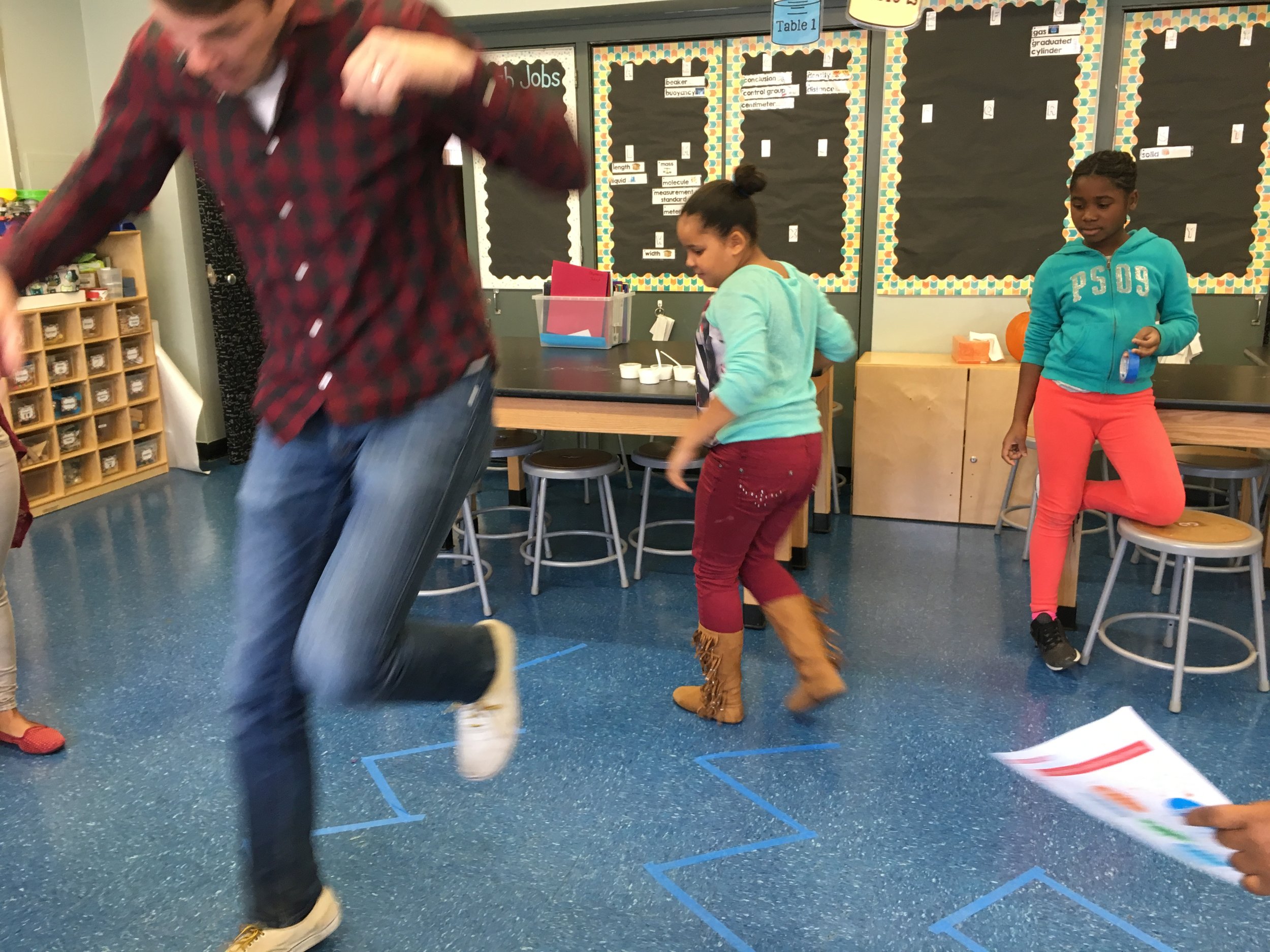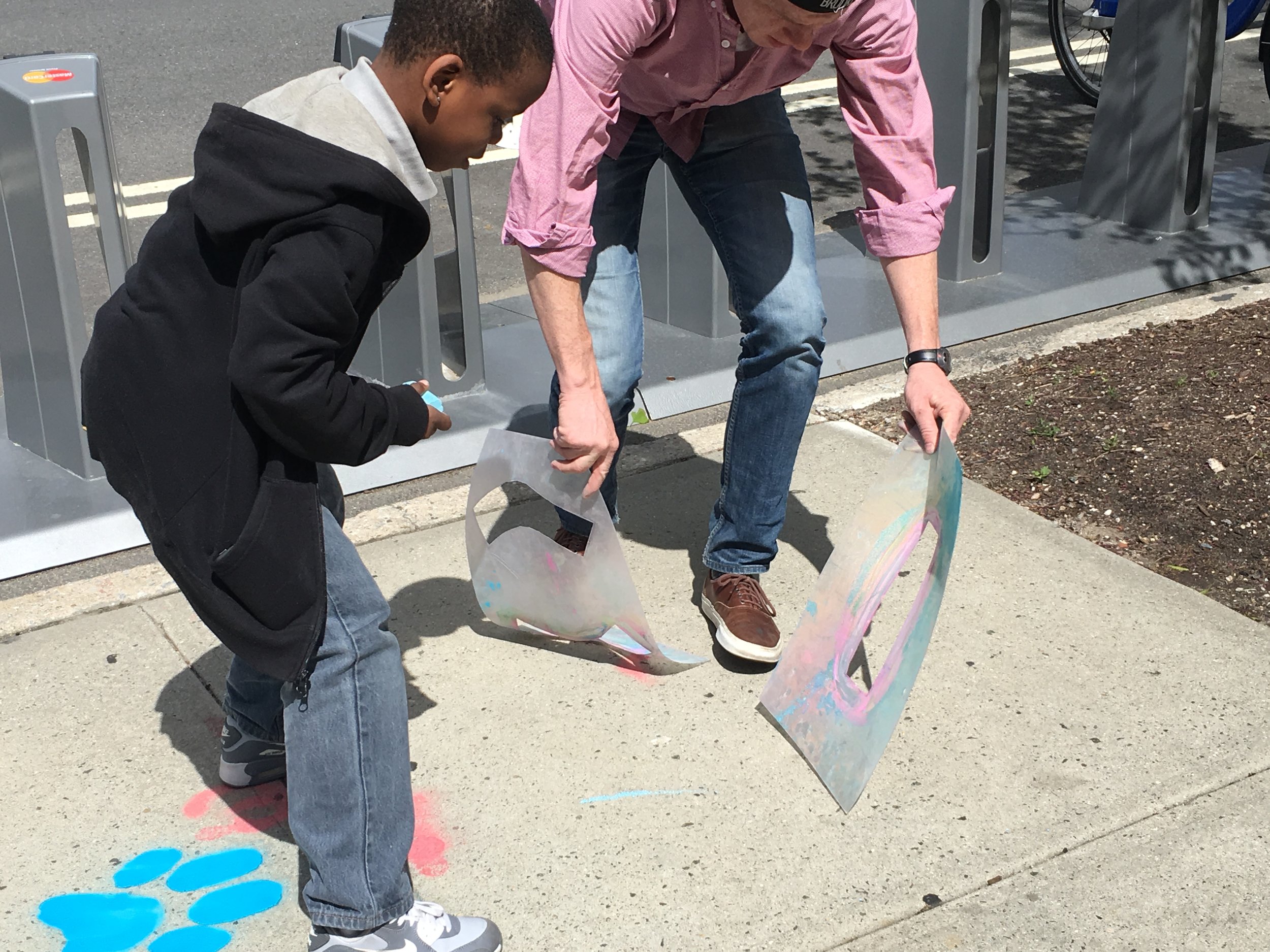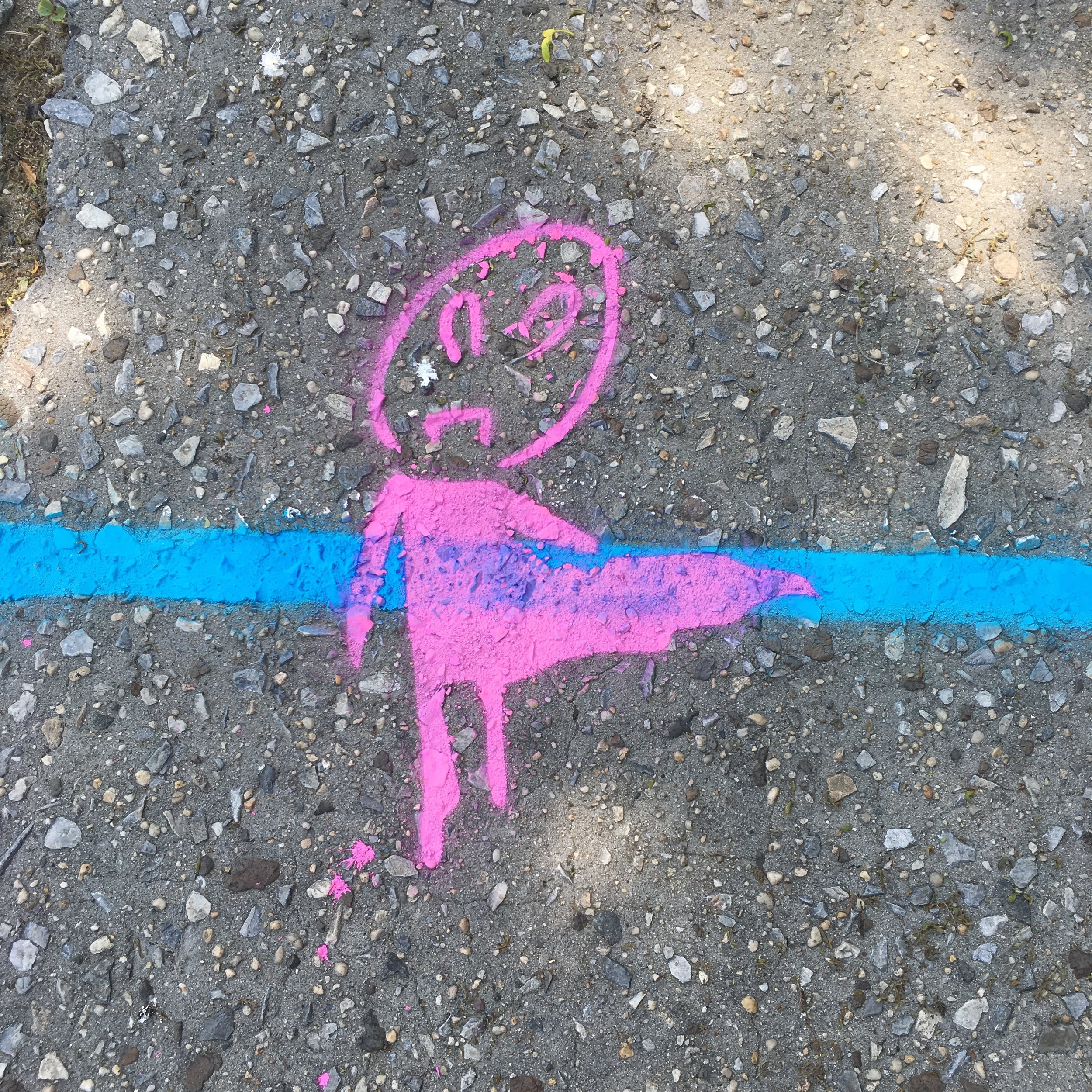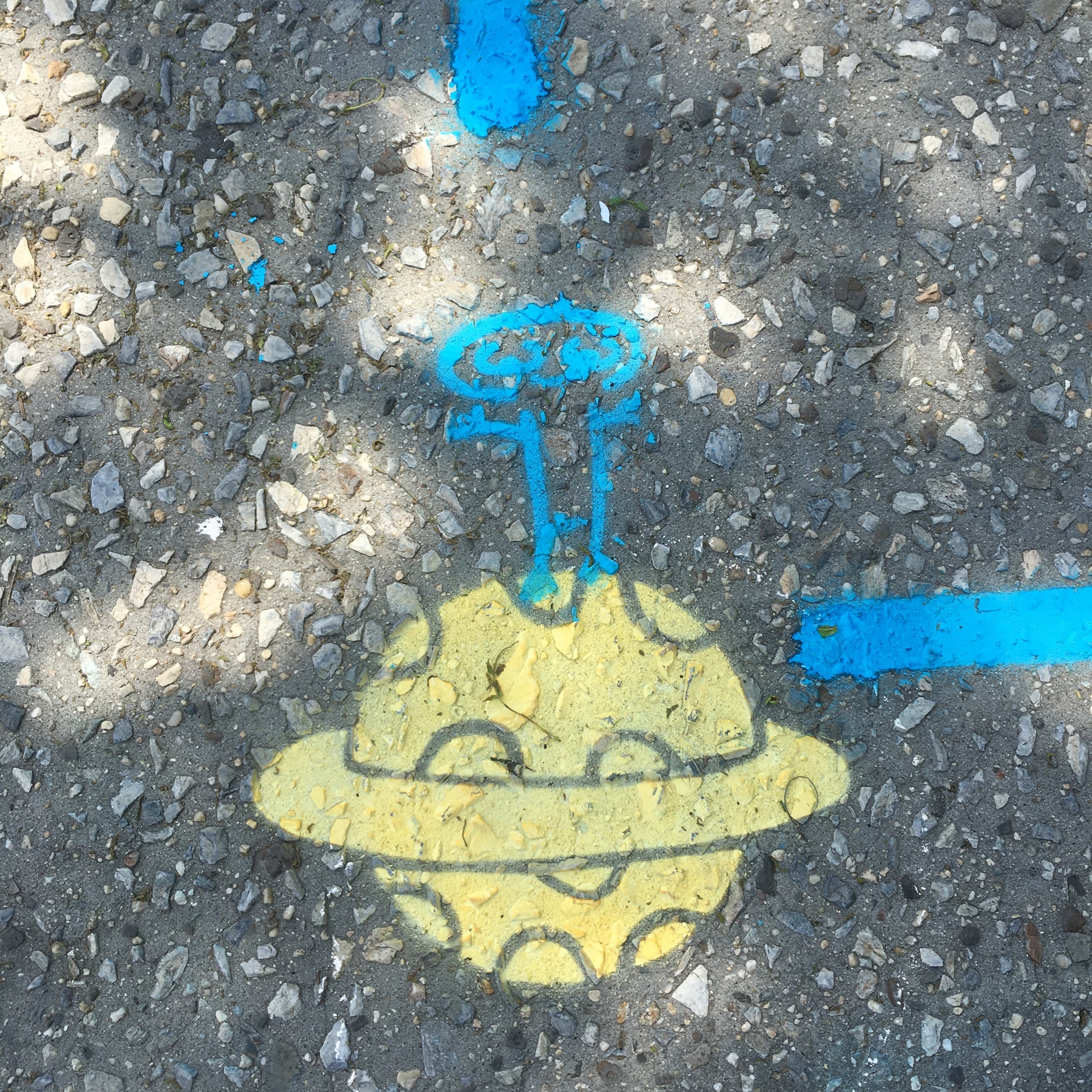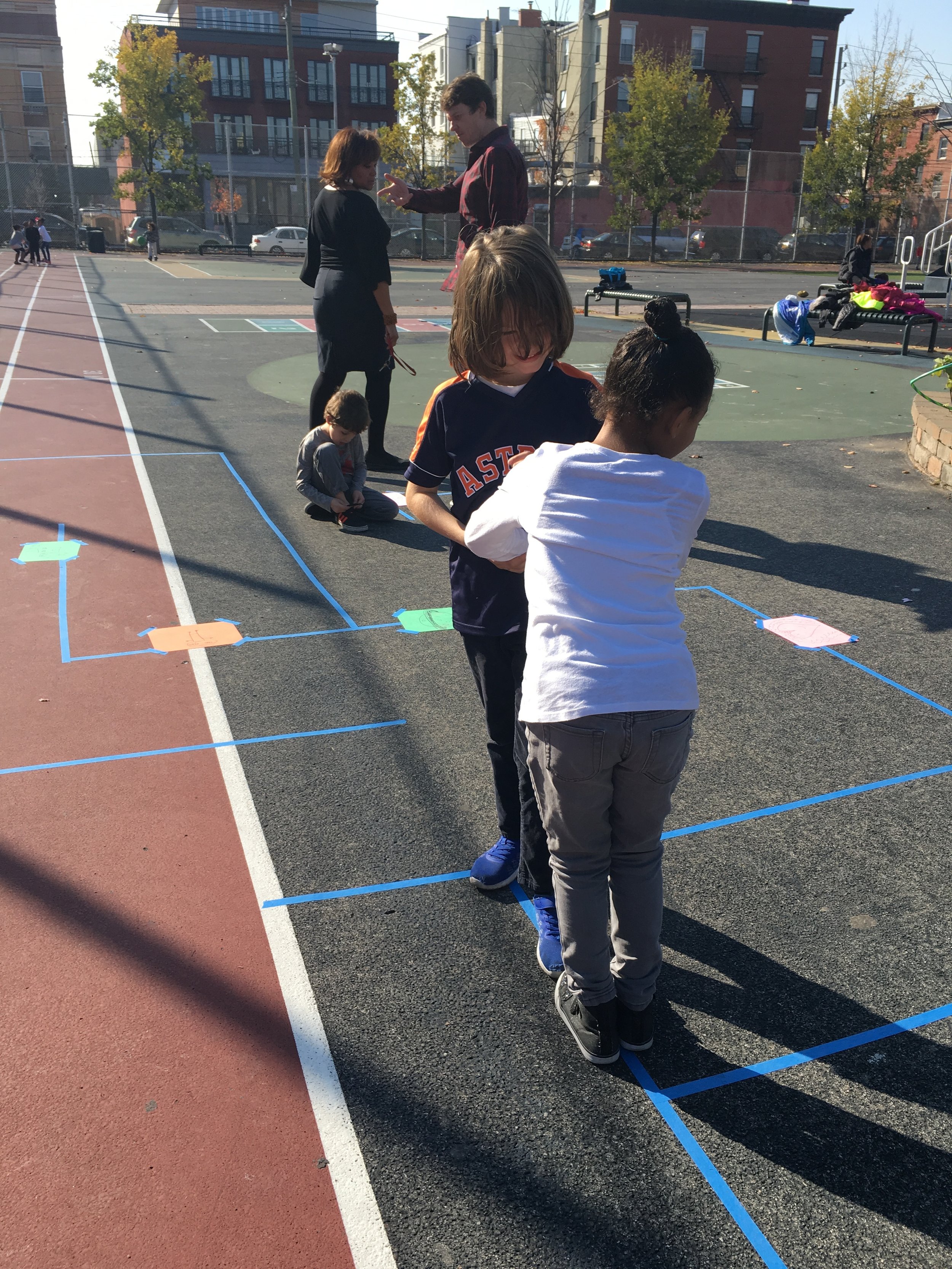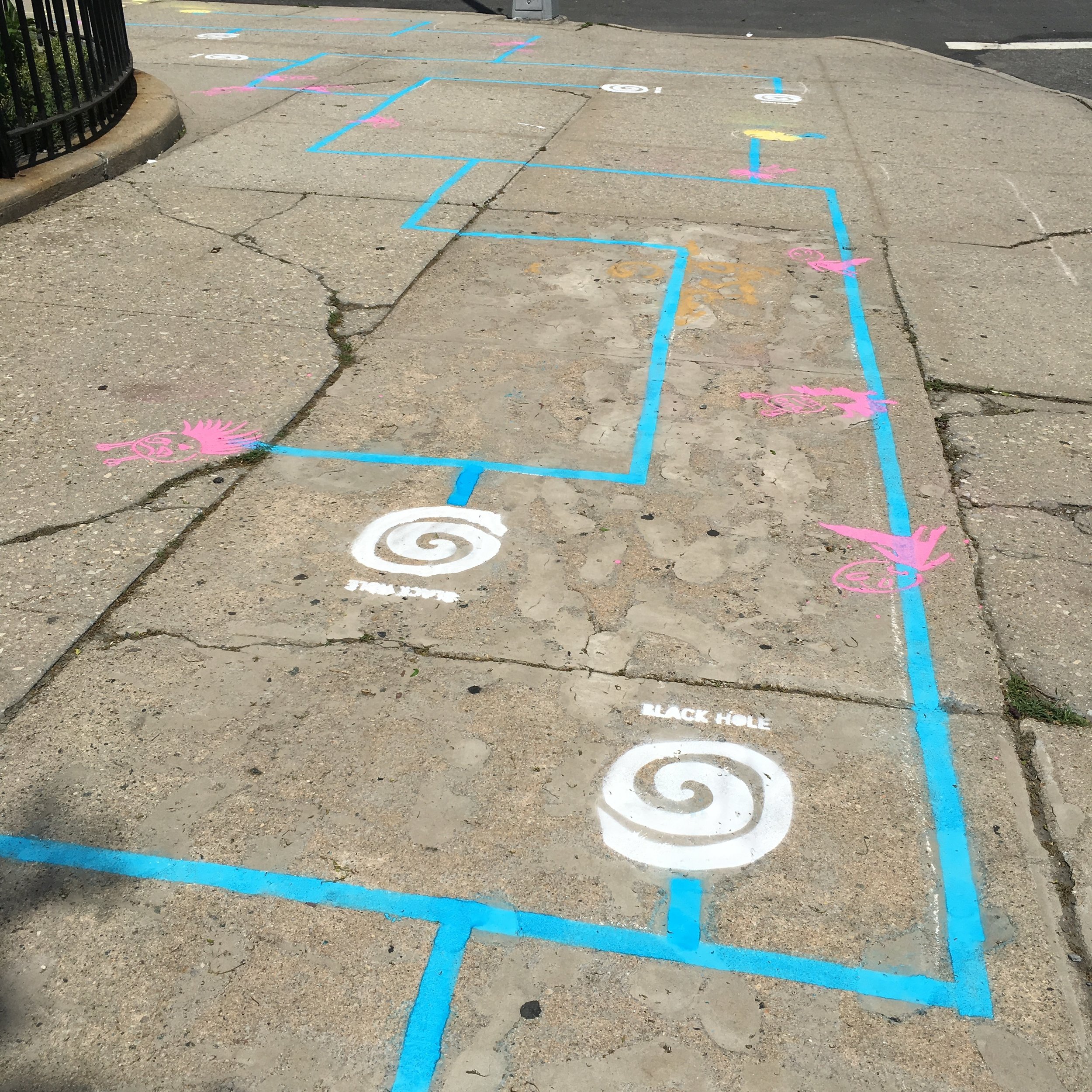Way to play
Way to Play was a kid-created collection of sidewalk games made in collaboration with Gigantic Mechanic, funded by a Kaboom! Play Everywhere grant.
A semi-permanent playground installation at PS 15 in Red Hook, Brooklyn.
An intervention
The Kaboom! Play Everywhere Challenge is meant to help bring playful energy to underserved communities. I worked with Gigantic Mechanic to propose sidewalk installation of art and games near bus stops, outside of libraries, and in high-traffic areas that weren’t particularly playful, but should be! Our goal was to engage kids and their families in physical activity in unexpected places.
Our project, Way to Play, along with several others were featured in the New York Times. Our end project definitely changed from our initial proposal, (pictured in the article) which included encouraging dancing near bus stops. It turns out… the parents of small children weren’t a huge fan of encouraging dancing right near busy streets. :D
Students traced out their ideas on paper before trying them in the real world.
in the classroom
We teamed up with elementary STEM classes at PS 15 in Red Hook, Brooklyn to design the sidewalk installations. We wanted kids to design the installations with and for each other. Greg and I didn’t live in the community and wanted to make sure the ideas, values, and preferences of the community was reflected in the work.
To connect our game design ideas to the classroom, we based our process on the Scientific Method that students were learning. We discussed game design, modding, the iterative process, and prototyping. We used a lot of chalk, tape, and ran around outside a ton.
Students brainstormed themes for the sidewalk, traced out paths for their mazes and hopscotches and told us what they wanted. We brought supplies and followed their lead.
on the playground
After discussing and drawing out initial ideas, we took students outside to draw their ideas on a playground-scale. Some designs were too complicated, some were too simple, but all of them were a ton of fun. We kept all of the initial student ideas, took pictures of everything they drew on the sidewalk, and headed back to the studio.
Groups of students worked together to create giant racetracks, mazes, and hopscotches and test them out.
Connecting the dots
We wanted students to contribute to the design of the project as much as possible, but some of the design process (like making stencils for the final installation) were not practical to include them on. Greg and I took student drawings back to the studio to select the final drawings and turn them into stencils for the final install. The students designed 3 installations: A hungry animal race, a space maze, and a space obstacle course.
Though we weren’t able to include students in every step of the process this time, Greg took the same worksheets we made and has run similar workshops with students that includes stencil making and final installation.
ready to play
After our initial trial run in the PS 15 playground, we took the finished designs and stencils over to the Red Hook Public Library. Over the next month we installed all 3 designs outside the library with the help of local librarians and a couple of student helpers.




